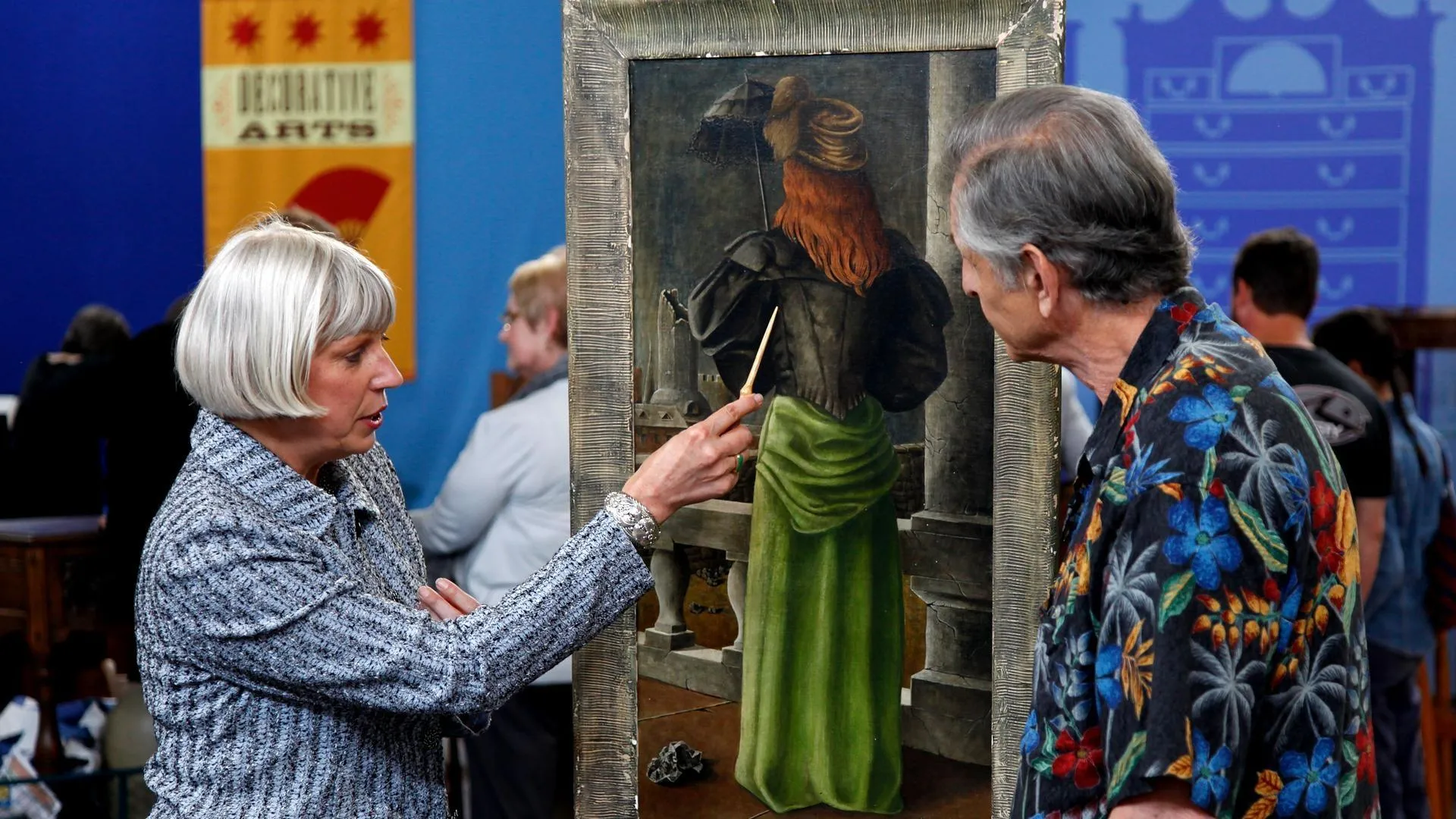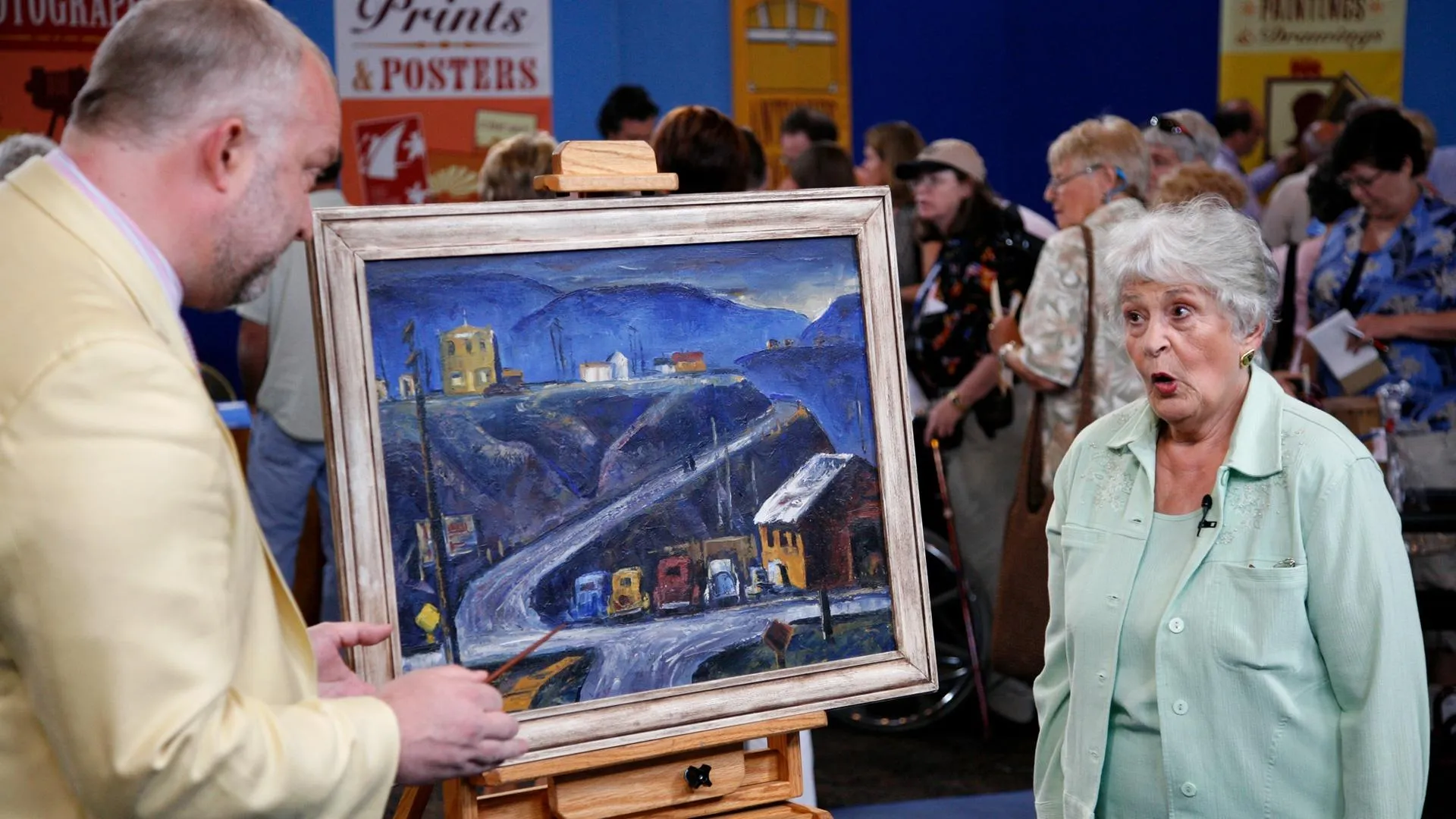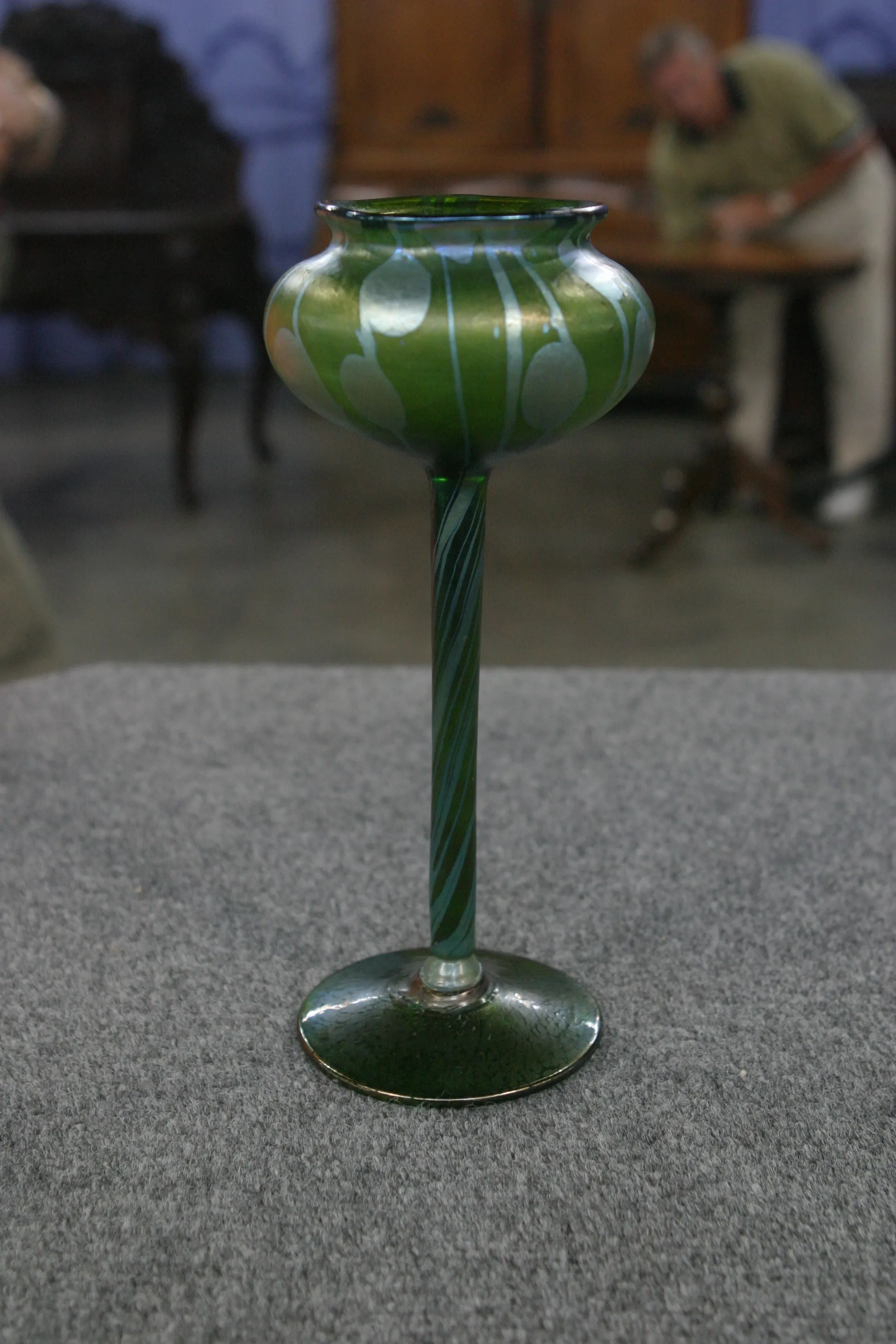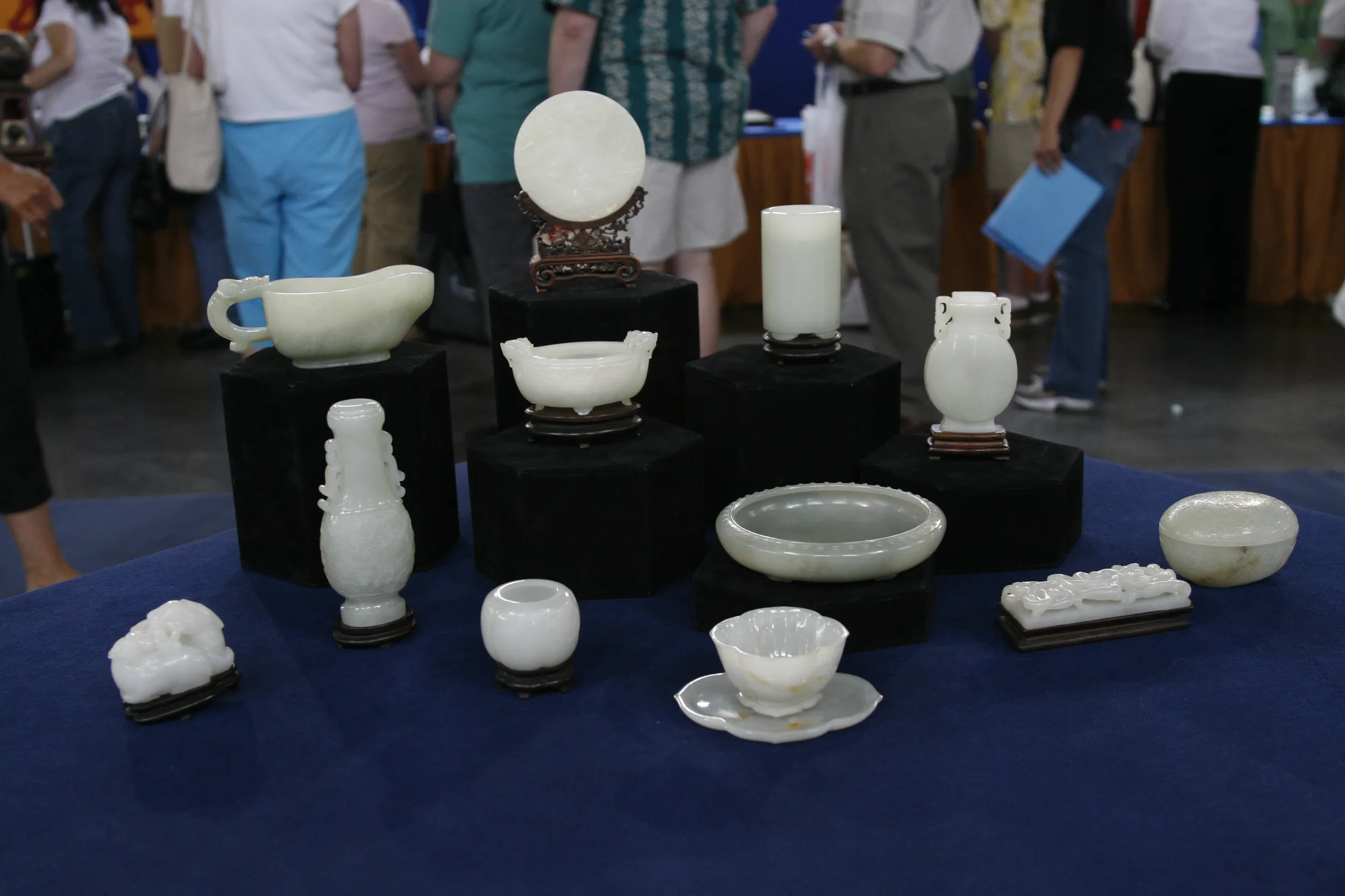1904 Van Briggle Vase & Expo Medal

$30,000 - $40,000 Auction
$30,000 - $40,000 Auction
After this segment aired, we received an email from a viewer, who pointed out that appraiser David Rago misspoke when he referred to the 1904 World's Fair as the "St. Louis Purchase Exposition." The 1904 fair celebrated the centennial of the purchase of Louisiana and should be referred to as either the Louisiana Purchase Exposition, the St. Louis World's Fair, or simply the 1904 World's Fair. Rago was also mistaken when he stated that St. Louis had held a world's fair every year. While the city of St. Louis did hold an annual exposition from the 1850s until 1902, those expos were meant to showcase agricultural and technical exhibitions from around the city. In 1903, with the World's Fair scheduled to come to St. Louis (although it ended up being postponed and didn't actually take place until 1904), the annual city expo was superseded by the much larger international event.
Further research confirms that this Van Briggle "Climbing for Honey" vase did in fact win a bronze medal at the Louisiana Purchase Exposition in 1904. After taping this segment, appraiser David Rago followed up with a colleague at the St. Louis Art Museum, who had access to the full 1904 Exposition records. The records revealed that a bronze medal was awarded to Van Briggle's "No. 914 Tall vase with modelled bears, green glaze." As Rago mentions in his appraisal, confirming this relationship between the vase and medal adds significantly to the value of the piece, which he says would now be between $30,000 and $40,000 at auction. The Expo records also revealed one more important detail: the designer of the vase was actually a man named George B. Young. Why would a Van Briggle vase, bearing the trademark double "A" signature of Artus and Anne Van Briggle, be attributed to a different designer? Rago explained that Van Briggle pottery was molded, rather than hand-thrown, consequently, "Artus designed pieces that others, like his wife, may have finished, and vice versa." He went on to say that the 1904 Louisiana Purchase Exposition would have been a very important show for Artus — and, as it turns out, his last — so he probably wanted to make sure it represented the best pottery produced bearing his name. What is particularly interesting about discovering George B. Young's connection to the vase, however, is that Young was actually the great-grandfather of the vase's present-day owner, Todd, who brought the piece to the June 2011 Roadshow event in Eugene. The owner was incredibly surprised to learn of his great-grandfather's connection to the piece. Family lore dictated that the piece had been given to Todd's great-great-grandfather, Harvey Otis Young, by a mutual friend he shared with Artus Van Briggle. Todd had no idea that that "friend" of Van Briggle's was actually a designer for the famed potter and also his great-grandfather, George.
Featured In

episode
Eugene, OR, Hour 1
ROADSHOW visits the McKenzie River for to look into the antique fly fishing gear market.

episode
Special: Greatest Gifts
GREATEST GIFTS is filled with appraisals that will get you writing your holiday wish list.
Vase

appraisal

appraisal

appraisal
Understanding Our Appraisals
Executive producer Marsha Bemko shares her tips for getting the most out of ANTIQUES ROADSHOW.
Value can change: The value of an item is dependent upon many things, including the condition of the object itself, trends in the market for that kind of object, and the location where the item will be sold. These are just some of the reasons why the answer to the question "What's it worth?" is so often "It depends."
Note the date: Take note of the date the appraisal was recorded. This information appears in the upper left corner of the page, with the label "Appraised On." Values change over time according to market forces, so the current value of the item could be higher, lower, or the same as when our expert first appraised it.
Context is key: Listen carefully. Most of our experts will give appraisal values in context. For example, you'll often hear them say what an item is worth "at auction," or "retail," or "for insurance purposes" (replacement value). Retail prices are different from wholesale prices. Often an auctioneer will talk about what she knows best: the auction market. A shop owner will usually talk about what he knows best: the retail price he'd place on the object in his shop. And though there are no hard and fast rules, an object's auction price can often be half its retail value; yet for other objects, an auction price could be higher than retail. As a rule, however, retail and insurance/replacement values are about the same.
Verbal approximations: The values given by the experts on ANTIQUES ROADSHOW are considered "verbal approximations of value." Technically, an "appraisal" is a legal document, generally for insurance purposes, written by a qualified expert and paid for by the owner of the item. An appraisal usually involves an extensive amount of research to establish authenticity, provenance, composition, method of construction, and other important attributes of a particular object.
Opinion of value: As with all appraisals, the verbal approximations of value given at ROADSHOW events are our experts' opinions formed from their knowledge of antiques and collectibles, market trends, and other factors. Although our valuations are based on research and experience, opinions can, and sometimes do, vary among experts.
Appraiser affiliations: Finally, the affiliation of the appraiser may have changed since the appraisal was recorded. To see current contact information for an appraiser in the ROADSHOW Archive, click on the link below the appraiser's picture. Our Appraiser Index also contains a complete list of active ROADSHOW appraisers and their contact details and biographies.



